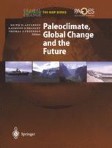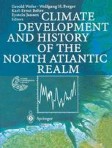Search
Search Results
-
Stable isotopic analysis on ancient human bones in Jiahu site
Palaeodietary analysis is one of important topics in bioarchaeology field and has been paid great attention to by Chinese archaeometrists recently....
-
Deciphering recent climate change in central Mexican lake records
Central Mexico contains a large number of lake basins offering opportunities for climatic reconstruction. The area has, however, also been the focus...
-

-
3D GPR measurements for archaeological application with interpretation aided by numerical modelling
The paper presents the results of georadar investigations carried out in the area of the monastery at Tyniec near Cracow for archaeological purposes....
-

-
Dehydration and rehydration of palygorskite and the influence of water on the nanopores
The dehydration and rehydration processes of the clay mineral palygorskite (PFl-1) were studied by textural analysis, thermogravimetric analysis...
-
A Holocene record of Neotropical savanna dynamics from El Salvador
The historical ecology of the Ahuachapan savanna is reconstructed from a 4.83-m sediment core from Laguna Llano del Espino, Ahuachapan, western El...
-
Structural Study of Maya Blue: Textural, Thermal and Solid-State Multinuclear Magnetic Resonance Characterization of the Palygorskite-Indigo and Sepiolite-Indigo Adducts
Palygorskite-indigo and sepiolite-indigo adducts (2 wt.% indigo) were prepared by crushing the two compounds together in a mortar and heating the...
-
The Role of Human Activities in Past Environmental Change
A crucial task for modern environmental science is to document and understand the ways in which human impacts on the earth system interact with other...
-
Lacustrine ostracodes as stable isotope recorders of late-glacial and Holocene environmental dynamics and climate
Oxygen- and carbon-isotopic signatures of benthic ostracodes from lake sediments from climate sensitive regions in the Alpine region, Central Europe,...
-
Is laser particle size determination possible for carbonate-rich lake sediments?
This paper examines the potential of a relatively new technique – laser diffraction particle size analysis – for use with carbonate-rich lake...
-
Lithic Materials
Archaeologists use the word lithic (from the Greek lithos meaning stone or rock) for materials and artifacts made from rocks or minerals. Geological...
-
Metals and Related Minerals and Ores
Although there are 70 metallic chemical elements, only 8 (gold, copper, lead, iron, silver, tin, arsenic and mercury) were recognized and used in...
-
Holocene Palaeoenvironmental Changes in North-West Europe: Climatic Implications and the Human Dimension
Holocene climate changes and variability in Europe are outlined on three time scales: long-term changes throughout the period as a whole;...
-
A late Holocene palaeolimnological record from central Mexico, based on faunal and stable-isotope analysis of ostracod shells
A late Holocene palaeolimnological record for central Mexico has been obtained from Lake Pátzcuaro, using recent and fossil ostracods. Lake...
-
A multi-proxy study of Holocene environmental change in the Maya Lowlands of Peten, Guatemala
We used multiple variables in a sediment core from Lake Peten-Itza, Peten, Guatemala, to infer Holocene climate change and human influence on the...
-
The prehistoric use of Chenopodiaceae in Australia: Evidence from Carpenter's Gap shelter 1 in the Kimberley, Australia
The use of Chenopodiaceae and Amaranthaceae has been recorded in a rock shelter site that shows evidence of human occupation from 40,000 B.P. more or...
-
Past imperfect, future tense: Archaeology and development
Archaeological sites are valuable nonrenewable resources and they are being destroyed rapidly by modern development projects of all kinds, worldwide....
-
Solar-Terrestrial Relations — A Historical Reminder
Since the very first assessment of the seasonal cycle, the understanding by mankind of solar-terrestrial relations has been fundamental for its...
